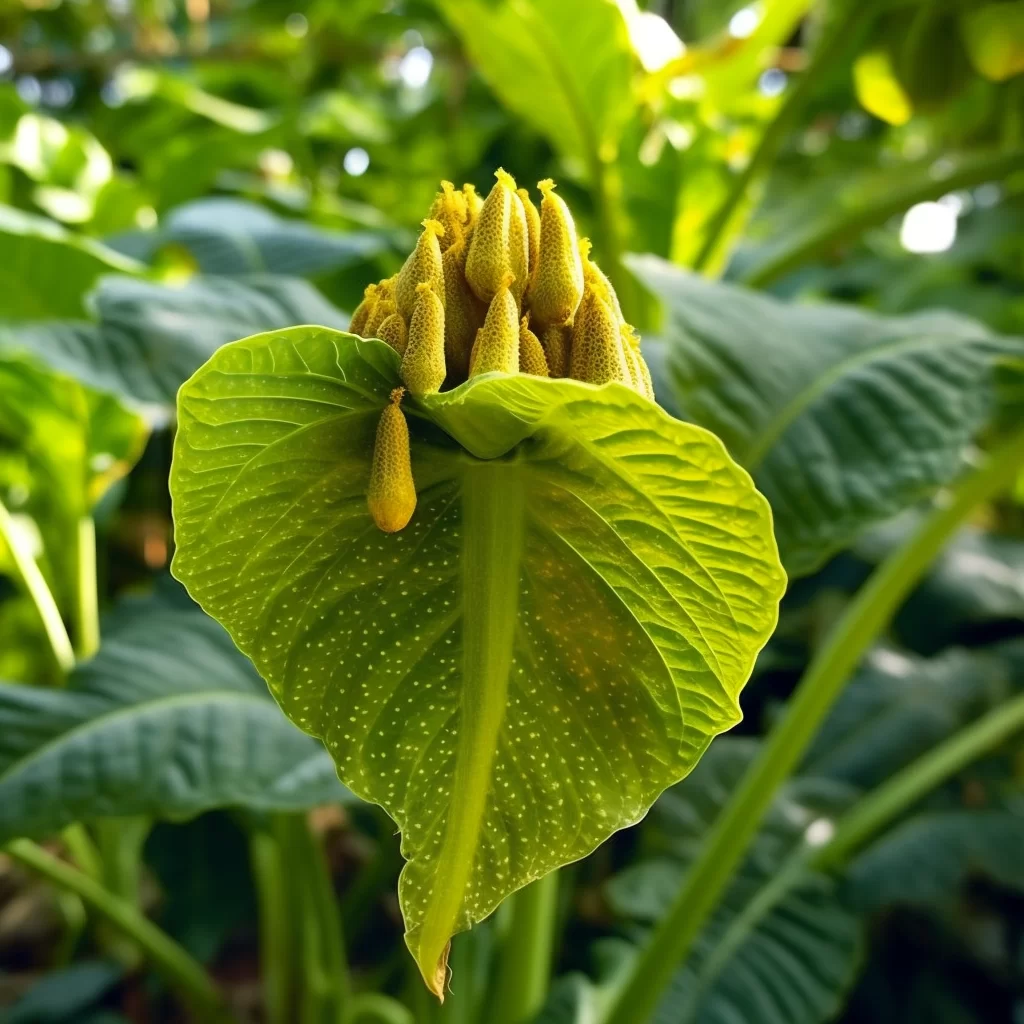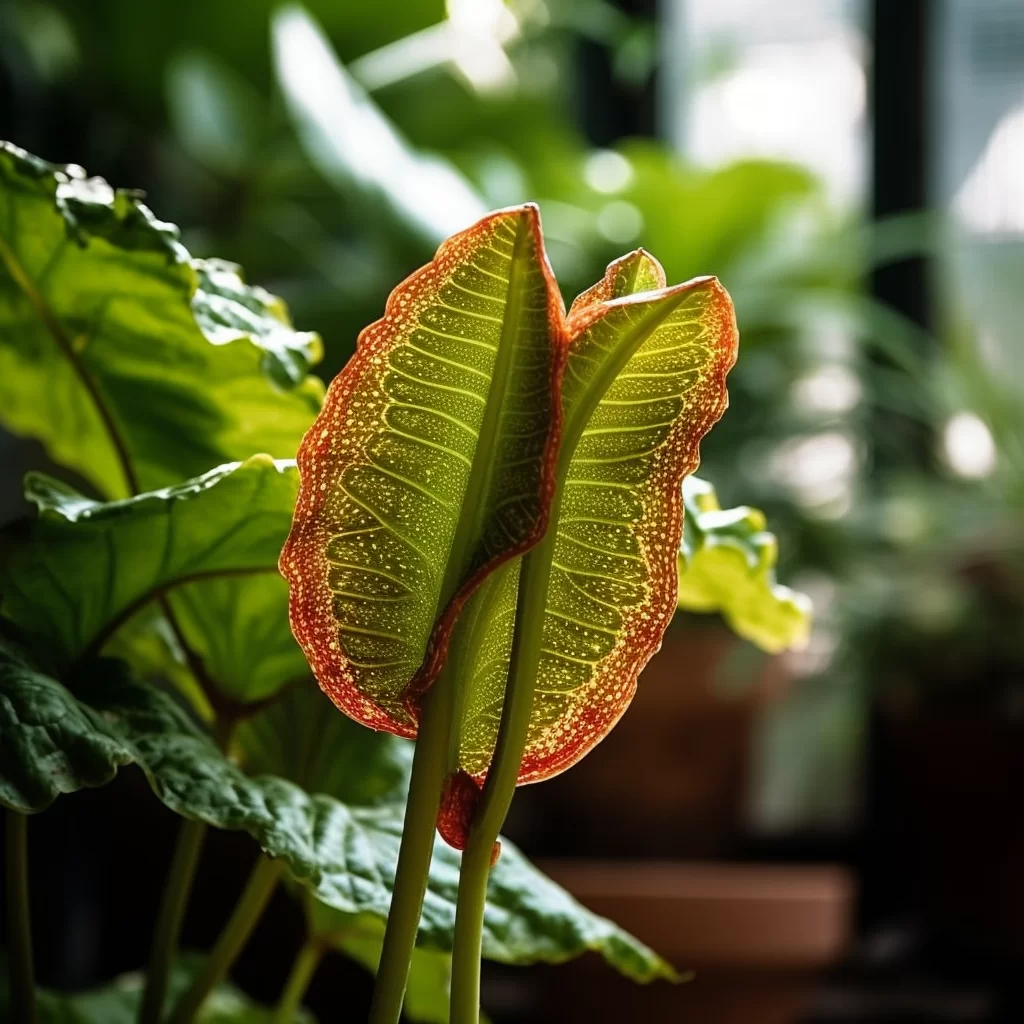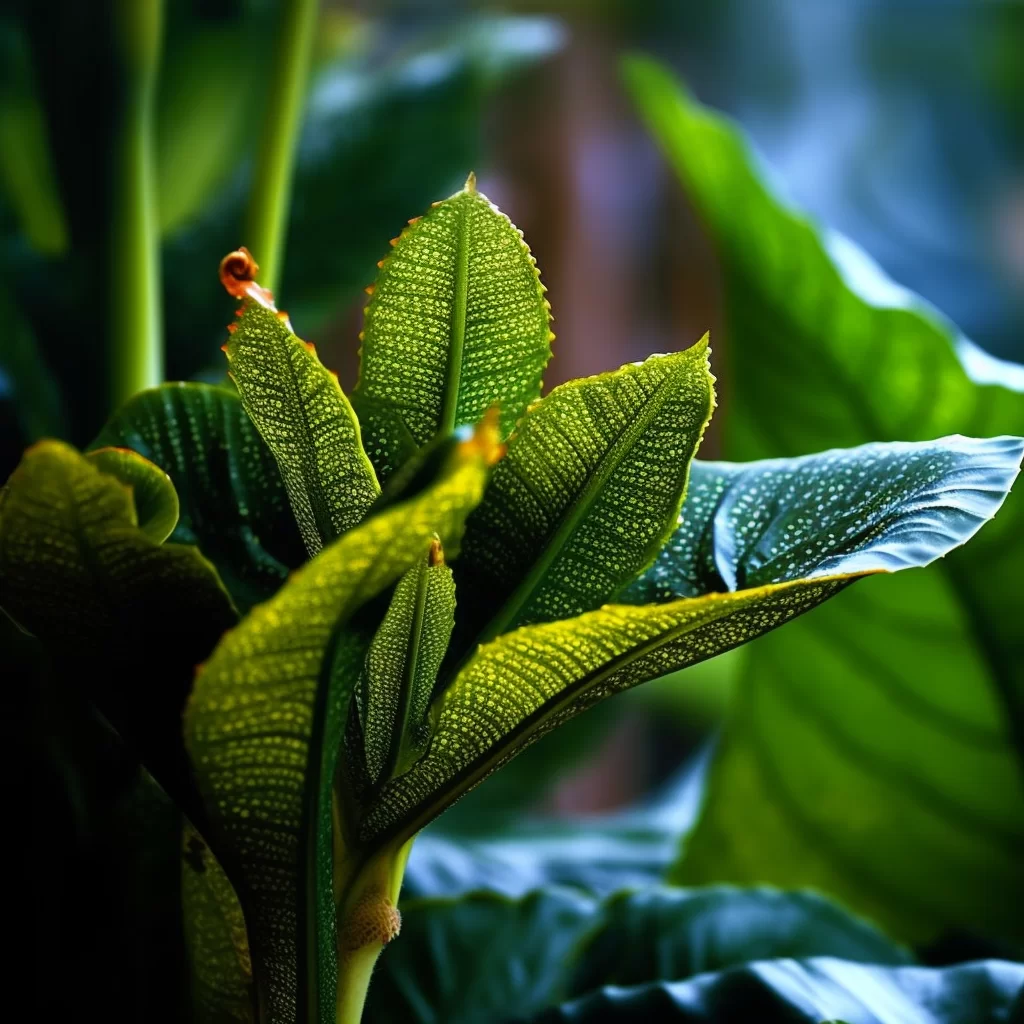Story of Day :
Contents
Xanthosoma Plant: Complete Guide and Care Tips
Gardening enthusiasts love to experiment with different kinds of plants, and the xanthosoma plant is one that’s gaining popularity these days.
Also known as elephant ears, this tropical plant has large leaves that resemble those of a taro plant.
Xanthosoma is native to Central America and the Caribbean region but can be grown in other parts of the world too.
Introduction to Xanthosoma Plant
The xanthosoma plant belongs to the family Araceae and is characterized by its large heart-shaped leaves that are green or variegated with white markings.
It grows from underground rhizomes and produces flowers on a long inflorescence called a spadix.
The leaves themselves can grow up to two feet long, making them an impressive sight in any garden or indoor space.
They come in various shades of green, ranging from light lime greens to dark forest greens.
Variegated varieties have white markings on their leaves making them more striking in appearance.

Care tips for Xanthosoma Plant
- Light: The xanthosoma plant prefers bright but indirect light, especially during growing season spring through summer.
- Temperature: This tropical species prefers warm temperatures around 70-80 degrees Fahrenheit throughout the year which makes it an excellent houseplant for many areas around the world!
- Watering: Keep soil moist at all times during active growth period (spring & summer), reducing watering frequency when growth slows down such as fall through winter months.
- Fertilization: Feed every month with a balanced fertilizer during the growing season.
- Humidity: Provide high humidity around your xanthosoma plant.
You can use a pebble tray filled with water to increase humidity in indoor environments, and misting the leaves can also help!
- Potting & Soil: Xanthosoma will grow well in fertile, well-draining soil.
It is best planted in a large pot as they have deep roots that need space to explore.
Pests and Diseases
Xanthosoma plants are relatively pest and disease resistant.
However, they can suffer from fungal issues when overwatered or if there isn’t enough ventilation around the leaves.
The most common pests that might affect elephant ears are spider mites and mealybugs.
Treat infestations with an insecticidal soap spray or neem oil solution.

Propagation of Xanthosoma Plant
You can propagate xanthosoma through division or by planting its rhizomes directly into soil mixtures consisting of sand, perlite or vermiculite mixed with peat moss.
Propagation is best done during spring when new growth begins to emerge from the rhizome roots).
- Division: Separate healthy plantlets by gently pulling them away from their parent plant’s root system using a sharp knife/scissors while being careful not to damage either parent/child rhizome (or any attached roots)
- Rhizome Division:If dividing by rhizome you’ll need small pieces containing at least one node each so they may produce new foliage once planted!

Conclusion

The xanthosoma plant is an eye-catching and low-maintenance tropical plant that’s perfect for novice gardeners or anyone looking to add some variety to their collection.
With its unique leaves and easy-going nature, it’s no wonder why it’s becoming a favorite among gardening enthusiasts worldwide! Remember to keep the soil moist, provide good drainage and bright indirect light, and you’ll have a thriving plant in no time!